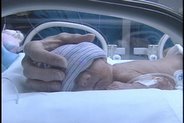
The concept of airborne disease transmission was well accepted in the early to mid 1900's. It was frequent that you would see UV lights in hospital wards for upper air disinfection. UV lights were a standard form of infection control in TB wards.
But then times changed. Aggressive measures helped to eradicate TB from our country. Drugs such as vaccines proved effective and immediate. Hospitals, like all buildings, began to have ventilation to exhaust contaminated air while bringing in fresh air. Scientists and researchers turned away from studying airborne transmission and moved on to newer issues.
Since the advent of SARS, pandemic influenza and a resurgence in TB, scientists are once again turning their attention to airborne transmission. We've prepared a new white paper that examines some of the findings of these new studies. Like all good research it answers some questions and raises some more! Hopefully this spark new interest in studying airborne transmission.


1 comment:
Studies such as this punctuate the need for emperically-determined conclusions about airborne disease/contagion. Dilution as a control mechanism for airborne pathogens is not novel; rather the ID and control of airborne pathogens by some means is a new concept to the larger medical community.
Post a Comment